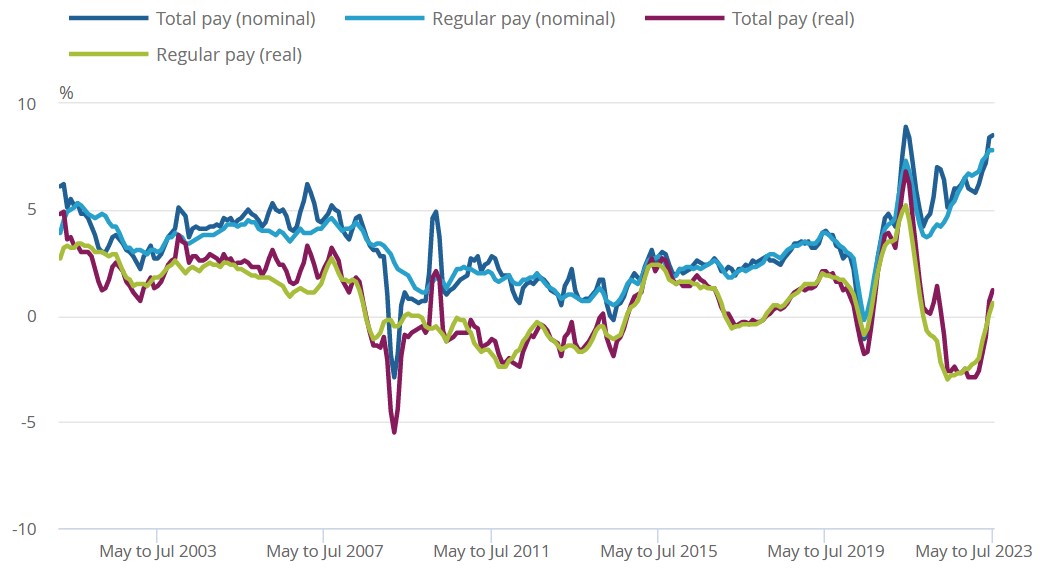ONS Labour Market September 2023
Vacancies continue fall from highs
- The number of job vacancies in June to August 2023 was 989,000 – a decrease of 64,000 from March to May 2023.
- Vacancies declined in 13 of 18 sectors measured on a quarterly basis. The largest fall in vacancies came from professional, scientific and technical activities, down by 13,000 compared to the previous quarter.
- On an annual basis, total vacancies decreased by 268,000 (-21.3%). 16 of 18 sectors faced decline, with accommodation and food service activities experiencing the largest falls.
- The total number of vacancies remains 188,000 above pre-pandemic levels (January to March 2020).
Decline in retail employees continues
- Early payroll estimates for August show the number of payrolled employees rose by 449,000 employees compared to the previous year (up 1.5%).
- Compared to the previous month, the number of payrolled employees was broadly flat, decreasing by 1,000 employees.
- The largest yearly increase in payrolled employees continued to be driven by health and social work sector (a rise of 193,000 employees YoY), while the smallest remained in the wholesale and retail; repair of motor vehicles sector (a fall of 19,000).
Unemployment edges up
- The unemployment rate for May to July 2023 is estimated at 4.3%, 0.5pp higher than the previous three-month period and 0.3pp above pre-pandemic levels.
- The most significant increase in the quarter came from the number of people unemployed for up to six months increased, marking the largest quarterly increase since August to October 2022.
- The economic inactivity rate rose by 0.1pp on the quarter to 21.1% in May to July, which is 0.9pp higher than the pre-pandemic level. This was driven by those inactive because they are students or long-term sick.
Employment rate declines
- The employment rate for May to July fell 0.5pp in the quarter to 75.5% and is 1.1pp below pre-pandemic levels.
- The number of full-time employees decreased in the period, but remains above pre-pandemic levels. The number of part-time employees also increased in the quarter, while both full-time and part-time self-employed workers decreased.
Hours worked drops
- Total actual weekly hours worked decreased by 18.5 million hours on the quarter to 1.04 billion hours in May to July.
- This is 12.2 million hours below pre-pandemic levels (December 2019 to February 2020).
- The decrease in the quarter was largely driven by men.
Earnings outstrip price rises
- In nominal terms, average regular pay (excluding bonuses) for employees in Great Britain was £617 per week before tax and other deductions from pay in July – up from £572 per week a year earlier.
- Average total pay (including bonuses) for employees in Great Britain was £664 per week before tax and other deductions from pay in July – up from £615 per week a year earlier.
- Regular pay rose by 7.8% and total pay by 8.5% in the three months to July compared to a year earlier.
- Average regular pay growth in the private sector was 8.1% in the three months to July, while public sector pay rose by 6.6%.
- In real terms (adjusted for CPIH inflation), regular pay and total pay increased 0.6% and 1.2% YoY respectively in the three months to July.
Average weekly earnings annual growth rates in Great Britain, seasonally adjusted, January to March 2001 to May to July 2023

Source: ONS
Back to Retail Economic News